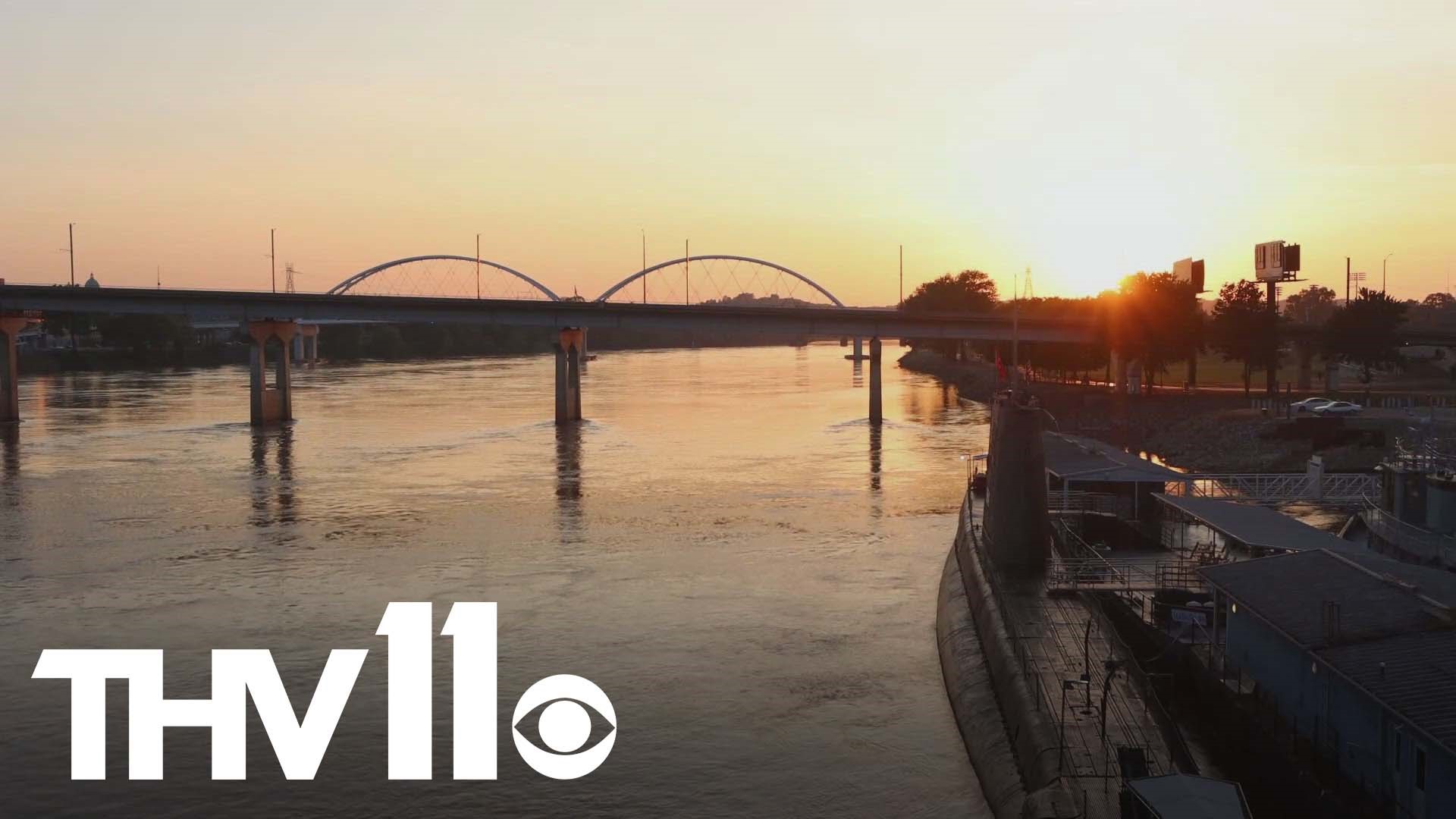LITTLE ROCK, Ark. — Drivers accustomed to the headaches of long-running highway expansions while weaving among tractor-trailers should welcome the news of an expansion that's coming to a different form of transportation.
"This is actually designated as Marine Highway 40," said Jay Townsend, spokesperson for the Little Rock Army Corps of Engineers while standing next to Murray Lock and Dam on the Arkansas River. "It's just like Interstate 30, or 540, or any others. It's transporting goods and commerce through the state of Arkansas."
For people who live on or near the Natural State's namesake river in those terms, and with the mighty Mississippi (M-55) along its eastern border— Arkansas isn't always the first river thought of when it comes to commerce.
Actually though, there's a lot of work flowing by every day.
"We're talking about roughly 11 million tons of cargo shipped on the MKARNS annually," said Townsend, as he referred to the official name for the working river: the McClellan-Kerr Arkansas River Navigation System. "That's steel and aggregate and petroleum. The types of things you wouldn't want on the interstate system."
Like America's highway systems— it's more than just roads, or in this case, a shipping navigation channel.
It takes technology to unlock America's interior, and the MKARNS has 18 locks and dams, man-made canals, and natural engineering.
Today, under the surface, there's a nine-foot channel for barges and tugs to plow through. But like lanes of I-30 that cross above it in Little Rock, the Arkansas River is due for an expansion, going three feet down to make the channel 12 feet deep.
"Very similar to widening the I-30, it's reached a capacity and so it's got to be bigger and wider to transport people in and out a Little Rock faster," said Townsend. "Same for the river system here. It's got additional capacity, and so we can put more commerce [on it] and goods shipped on it around the world."
Right now, the major bulk carriers on the Arkansas ship use a rig of 15 barges arranged in a three-by-five rectangle. A powerful push or tug boat propels it through the water.
Whatever is being moved, they load the barges with enough stuff to go no more than nine feet below the surface. Any more and they hit bottom.
A 12-foot channel would change that by allowing shippers to pile more cargo on the barge, go deeper down into the water, and thus ship more product and make more money.
"As it stands right now, the Arkansas River averages about 11 million tons of commodities shipped up and down the river system," Townsend said. "We believe when we go to a 12-foot channel, we'll see an increase of about 40 percent."
That should equal more than four million additional tons of goods a year.
Part of the Army Corps' mission is to keep the channel from getting too shallow at any point along the 445 miles of the system. That gives them a headstart while relying, for the most part, on a natural process that saves engineers from digging.
"It's called self-scouring," said Townsend, while pointing to some of the jetties, dikes, and natural embankments near the Big Dam Bridge. They act like a giant thumb over the end of a garden hose to generate higher pressure.
Ideally, they would create a faster river that will naturally carve the channel and send the silt and sand eventually out to sea.
"When you push all the water into the channel, it generates velocity, and it pushes the sand and sediment out," he said. "It's a big effort to dig up the Arkansas River system too, but what we want it to do is work for itself."
While the process works naturally, we will have to pay for all that infrastructure to make it happen. Startup funding totaling $92 million is coming from the "Infrastructure Law" passed by Congress and President Biden last year.
It shouldn't be as big a headache as widening a highway, and there won't be a glittering bridge when it's done. People probably won't notice it at all, but there should be a quiet payoff leading to a huge economic cash flow.
"Visually, you're gonna look at it and go, 'Well, what changed?'" said Townsend. "But the mariners are going to know what changed. The farmers when they're pushing out their agriculture, they're going to know what changed when more is moving."

